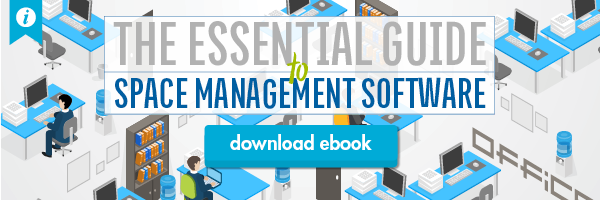These 8 Bad Habits Can Stunt Your Space Utilization Strategy


Have you developed a space management strategy, or implemented facility management software, only to discover that your performance results are less than stellar? Where could your plan have gone wrong? There are  several common bad habits that can stunt the effectiveness of any space management strategy, even if you’re using the best software money can buy to get it done. Here are the most frequent reasons strategies get thrown off track.
several common bad habits that can stunt the effectiveness of any space management strategy, even if you’re using the best software money can buy to get it done. Here are the most frequent reasons strategies get thrown off track.
1) Bad Data
Even in the best integrated workplace management system imaginable, bad data can’t give you good results.
If the information is out of date, incomplete, inaccurate, or inconsistent, there really is no strategy or system that can deliver good results out of bad data. It is important to develop routines and strategies for keeping the data current and verifying its accuracy regularly, so that any insight or predictions you make based on data can be trusted.
2) Relying on Excel Spreadsheets
Excel spreadsheets are manual, cumbersome, inefficient, and ineffective when it comes to maintaining current data for tracking and reporting on various performance metrics. Sure, it might be what you’ve used for years, but modern facility management processes need to have flexible and expandable tools, capable of accessing multiple functional resources when generating an accurate representation on the ‘state of your facilities’. Invest in the right space utilization software so that you can get the insight and analytics you need for today’s FM.
3) Bad Habits Using Your Space Utilization Software
Good software can’t overcome bad data entry practices.
Even if you have the right software solution, you can still run into trouble when operational workflow processes haven’t been standardized within each functional group, and include the ability to validate current data by incorporating quality assurance check points along the way. Where and whenever possible, configure data entry standards that eliminate the ‘guess work’ factor where manual data input is required. And always ensure that FM workers and managers get the initial and on-going training and support required to understand the ever-changing landscape of facilities management as currently defined by your organization.
4) Planning for Too Many “What If’s”
FM software is a powerful tool within an FM manager’s arsenal, opening up a limitless vision of requirements that could ‘potentially’ be supported in the future. Manager’s must remember that the future is just that, a series of ’what if’ scenarios that may, or may not come to pass. The right IWMS will be flexible and expandable enough to accommodate future requirements as they come along. Keep your eye on the prize that’s in front of your team and define functional workflow processes as they can be supported by data values that are actively available to your teams TODAY.
5) Accommodating Too Many One-Off Requests
Ideally, every manager would be able to accommodate their customer’s one-off requests as often as possible, until there are more special requests than there are those that go through the normal procedures and processes. Part of your strategy should be to plan for a variety of contingencies and then make sure most of the requests fit within one of those scenarios already arranged for in the plans.
6) Not Aligning FM Data Metrics and Processes With the Corporate Organizational Structure
Your organization is unique in its vision, mission, and goals and the more directly your data metrics are aligned specific to your organization, the more meaningful they will be. Are your configured data metrics a value add, aligned with the official corporate organizational structure and are you able to accurately capture the data required to report on performance in a timely, meaningful manner? If you’re unsure how to answer those questions, don’t be afraid to reach out to other functional groups that may have greater knowledge in identifying systems and data elements that may or may not exist within the organization today. And don’t be discouraged if your process metrics aren’t actively being captured, it doesn’t mean the data doesn’t exist; it could be as simple as turning on an existing functionality so that your data metrics can be actively captured within future workflow processes.
7) A Lack of Executive Support
Is management on board with the strategies you’re attempting to implement? To achieve buy-in and active support of your processes, management must be involved in the process of defining and developing workflow processes. Do they budget for the FM software you need? Do they provide the training and support necessary to make it work? Are they receptive to the input the facilities manager has regarding current and future facilities and space needs? Typically, when the C-suite doesn’t support the strategies, even the best ones aren’t successful.
8) Trying to Force Things to Change Too Quickly
New strategies and procedures aren’t adopted enterprise-wide overnight. It takes time for everyone to accept, learn, and embrace your space management strategies. Start small, one campus or even one building at a time. Perfect your management strategy and implement standardization processes that will facilitate your ability to actively capture and report on organizational performance in a meaningful way to key stakeholders. Give the strategy time to work and give people time to realize the benefits and support the change you’re trying to make. Nothing worthwhile is ever built in a day, or even a week or a month. In time, acceptance and adoption will come.
Just remember, every strategy requires clear steps for execution and the right tools (FM solution) to be successful. And when those two variables are facilitated as part of your operational workflow processes, your organization will achieve their facility management goals!
